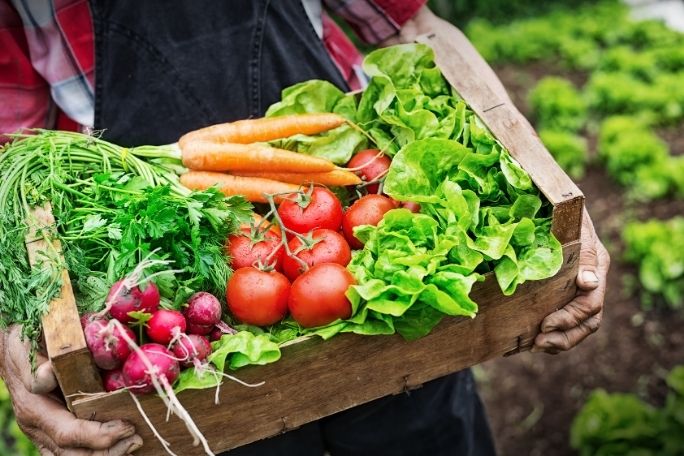Lesson summary
In this lesson, students will discover ways that they can incorporate permaculture into their own designs and develop the details around a designed solution. Students work in groups to conduct an assessment of the site chosen for their project, and then develop a design brief to communicate the details of their design. Students share their designs with their class through a gallery walk format, giving an opportunity to view each other’s work. This lesson can be taught using a site at school or your local community and can be run as a hypothetical or, even better, as a real project.
Learning intentions:
Students will...
- understand how the principles and ethics of permaculture can be used in their own design solutions
- understand how to create a design brief
Success criteria:
Students can...
- develop a design brief in response to criteria
- contribute to class discussions
- work independently and collaboratively
Lesson guides and printables
Lesson details
Curriculum mapping
Australian curriculum content descriptions:
Year 7 & 8 Design and Technologies:
- Analyse how food and fibre are produced when designing managed environments and how these can become more sustainable (ACTDEK032)
- Investigate the ways in which products, services and environments evolve locally, regionally and globally and how competing factors including social, ethical and sustainability considerations are prioritised in the development of technologies and designed solutions for preferred futures (ACTDEK029)
- Independently develop criteria for success to evaluate design ideas, processes and solutions and their sustainability (ACTDEP038)
- Use project management processes when working individually and collaboratively to coordinate production of designed solutions (ACTDEP039)
Year 9 & 10 Design and Technologies:
- Critically analyse factors, including social, ethical and sustainability considerations, that impact on designed solutions for global preferred futures and the complex design and production processes involved (ACTDEK040)
- Investigate and make judgments on the ethical and sustainable production and marketing of food and fibre (ACTDEK044)
- Investigate and make judgments, within a range of technologies specialisations, on how technologies can be combined to create designed solutions (ACTDEK047)
- Critique needs or opportunities to develop design briefs and investigate and select an increasingly sophisticated range of materials, systems, components, tools and equipment to develop design ideas (ACTDEP048)
- Develop, modify and communicate design ideas by applying design thinking, creativity, innovation and enterprise skills of increasing sophistication (ACTDEP049)
Syllabus outcomes: D&T5.3.1, D&T5.3.2, D&T5.6.3, D&T5.1.1, D&T5.4.1, D&T5.5.1 and SC4-13ES, T4.1.2, T4.1.3, T4.4.1, T4.6.2
General capabilities: Critical and Creative Thinking, Ethical Understanding
Cross-curriculum priority: Sustainability
Relevant parts of Year 7 & 8 achievement standards: Students explain how social, ethical, technical and sustainability considerations influence the design of innovative and enterprising solutions to meet a range of present and future needs. They explain how the features of technologies influence design and production decisions. Students explain a range of needs, opportunities or problems and define them in terms of functional requirements and constraints. They collect, authenticate and interpret data from a range of sources to assist in making informed judgements. Students generate and document in digital and non-digital form, design ideas for different audiences using appropriate technical terms, and graphical representation techniques including algorithms.
Relevant parts of Year 9 & 10 achievement standards: Students produce designed solutions for identified needs or opportunities, students evaluate the features of technologies and their appropriateness for purpose for one or more of the technologies contexts. Students create designed solutions for one or more of the technologies contexts based on a critical evaluation of needs or opportunities. They establish detailed criteria for success, including sustainability considerations, and use these to evaluate their ideas and designed solutions and processes. They create and connect design ideas and processes of increasing complexity and justify decisions.
Unit of work: Creative Sustainability – Exploring Permaculture – Design & Technology – Years 7 – 10
Time required: 60+ mins
Level of teacher scaffolding: Medium – facilitate class discussion
Resources required
- Student Worksheet – one copy per student
- Computer access for students
- Students’ workbooks
- Optional – Permaculture Ethics And Principles
- Optional – Project Choices Worksheet
Skills
- Collaboration
- Community engagement
- Creativity
- Critical thinking
- Enterprise
- Ethical understanding
- Global citizenship
- Problem solving
Additional info
Faber-Castell has long understood the importance of creativity to all people, especially to young people. It is also continuously searching for environmentally friendly processes and high-quality materials to enhance children’s creative experience throughout every development phase. For more information about Faber-Castell, click here.


Welcome back!
Don't have an account yet?
Log in with:
By signing up to Cool.org you consent and agree to Cool's privacy policy to
store, manage and process your personal information. To read more, please see
our privacy policy here(Opens in new tab).
Create your free Cool.org account.
Many of our resources are free, with an option to upgrade to Cool+ for premium content.
Already have an account?
Sign up with:
By signing up to Cool.org you consent and agree to Cool's privacy policy to
store, manage and process your personal information. To read more, please see
our privacy policy here(Opens in new tab).